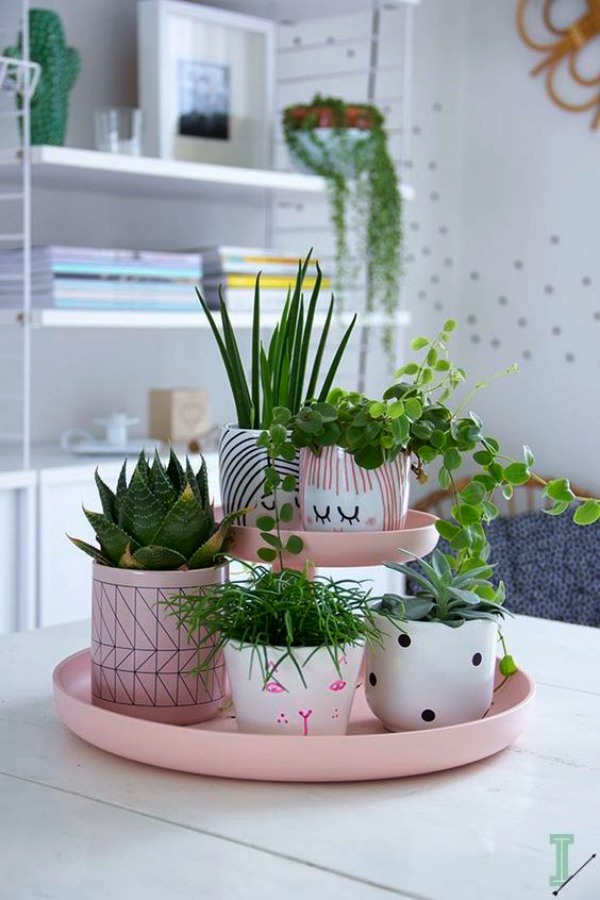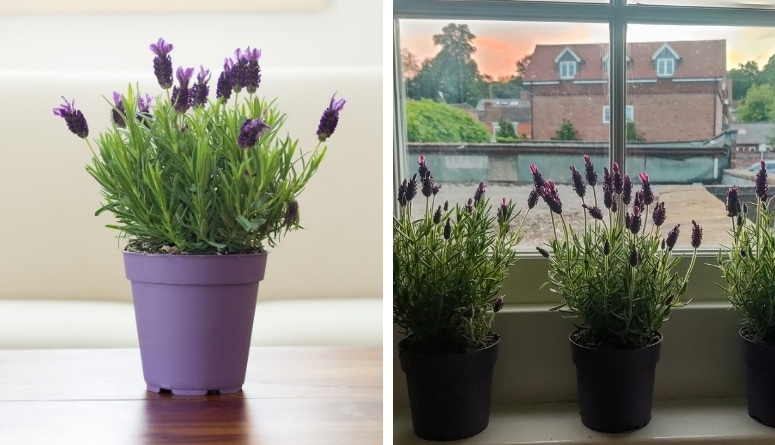This time around, we shall cover How To Look After Lavender Plants In Pots. Obviously, there is a great deal of information on Lavender Indoor Plant on the Internet. The fast rise of social media facilitates our ability to acquire knowledge.
how to look after lavender in pot-related material is also connected to Propagate Lavender and How To Easily Grow And Care For Lavender in Pots. As for further searchable items pertaining to Propagate Lavender, they will likewise have anything to do with Alan Titchmarsh’s tips on growing lavender in your garden.

14 Shocking Facts About How To Look After Lavender Plants In Pots | Propagate Lavender
- Lavandula stoechas: Common Names [Topped Lavender, Spanish Lavender,] Another lavender that blooms bright pink and purple flowers. A great ornamental for the garden and another wonderful pollinator. This lavender enjoys warm weather over cold, so bring it inside for winter. They are hardy up to USDA zones 8-9. Some neat varieties and cultivars include ‘Blueberry Ruffles’, ‘Bandera Pink’, and ‘Anouk’. - Source: Internet
- Why? Well, lavenders have it all. They are fashionable, scented and they attract bees. If you choose several species, you can have some plants in flower from now through to autumn. Lavenders are small and shrubby, and they don’t all have the traditional lavender flowers; some are white, pink, mauve or purple, and a few are closer to blue, but they all mix and match. - Source: Internet
- One of the easiest ways to grow lavender is from softwood cuttings instead of seeds. In the summer or early fall, look for a plant that is healthy and has green new growing tips. The piece you choose should be hard, but not woody like some of the older sections. - Source: Internet
- Transplanting your lavender outside is similar. Dry, sandy soil that is not fertile suits lavender just fine. If you have clay soil, you may want to amend it with a small amount of sand to reduce moisture. - Source: Internet
- Lavenders don’t just look and smell good, they are useful, too. You can cut the flowers for a vase indoors, dry them and rub off the individual florets to use as potpourri or make into scented sachets for your “frillies” drawer. Drop a bundle of lavender straw (the dried stems left over after stripping off the florets) into your pond to help clear the water if it turns green in spring. - Source: Internet
- Many different types of containers will work for you to grow your lavender. Just be sure that whatever pot you choose has adequate drainage. Here are a few styles: - Source: Internet
- In late spring or early summer, you can put your lavender plant outside when the weather is appropriate to your climate. Wait until the fall to do your first small pruning. You can harvest flowers in the first year. - Source: Internet
- A general rule of thumb is that lavender likes dry conditions. To meet these conditions look to plant your lavender in a tight space to minimize the amount of moisture in the pot. Find one a few inches larger than the diameter of the root ball. Remember you can always move your plant to a larger pot if your herb starts to outgrow its space. - Source: Internet
- Plastic: These are a good economical option though I try to minimize their use. Plastic has been known to leach chemicals and the plant has the potential to soak it up, which may in turn harm you in the long run [1]. Pots made from plastic may be best used for ornamental lavender. - Source: Internet
- Lavandula angustifolia: Common Name [English Lavender] This is one of the most popular species of lavender. Most have gorgeous blue-green or gray-green foliage and can be very cold-hardy. Many can survive temps as low as -10 °C (14 °F) which means they can stay outdoors as low as USDA zone 4 with some protection. This species is grown for its culinary use. A few common varieties/cultivars include ‘Munstead’, ‘Royal Velvet’, and ‘Hidcote’. - Source: Internet
- Lavandula dentata: Common Names [Fringed Lavender; French Lavender ] This is a wonderful species for pots and is easy to shape. If you want a plant that can look beautiful in the garden and attract pollinators, this is the species for you. Unfortunately, it cannot endure cold weather so be sure to bring it inside. Check out these varieties/cultivars: ‘Lambikins’ and ‘Ploughman’s Blue’. - Source: Internet
- FoxFarm Ocean Forest Potting Soil is a good base soil made with excellent ingredients for your plants that also supply enough nutrients when planting. It is already alkaline with a pH of 6.3 to 6.8 that lavender enjoys. You can try planting your herb in just the mix, but if you notice it remains too wet, repot the plant and mix in up to ⅓ sand or perlite into the potting mix to help improve drainage. - Source: Internet
- The container should be slightly larger than the root ball to minimize moisture in the pot. Remember, lavender likes well-draining soil (like FoxFarm Ocean Forest Potting Soil ). Place enough soil at the bottom of your pot that your root ball lays about ½ an inch from the rim of the container. Lay your lavender in your pot and tuck it in with a little covering of soil. Water the plant and you are good to go. - Source: Internet
- Wooden barrels: A great aesthetic to any garden, these can be wonderful for your herb. If you plan on harvesting lavender for culinary or medicinal use, choose one that has not been sprayed with chemicals. And, if this is a large barrel they can be very heavy and difficult to move. Place it in a location that can endure the winter. Also, a barrel made of oak can last many years as opposed to one made of pine. - Source: Internet
 Here are some recommendations for locating information about Lavender Indoor Plant to get you started:
- Research Lavender Companion Plants-related information from credible sources. This includes libraries, websites, and even journalistic professionals.
- When researching Alan Titchmarsh's tips on growing lavender in your garden, it is vital to be aware of the numerous sorts of electronic media sources, such as Google and YouTube. Social media networks, such as Facebook and Twitter, are also likely to include information on Lavender Watering.
Here are some recommendations for locating information about Lavender Indoor Plant to get you started:
- Research Lavender Companion Plants-related information from credible sources. This includes libraries, websites, and even journalistic professionals.
- When researching Alan Titchmarsh's tips on growing lavender in your garden, it is vital to be aware of the numerous sorts of electronic media sources, such as Google and YouTube. Social media networks, such as Facebook and Twitter, are also likely to include information on Lavender Watering.Video | How To Look After Lavender Plants In Pots
To obtain the most accurate information on Propagate Lavender, it is essential to investigate the credibility of each source by reading.
This page contains multiple Lavender Watering-related films from a variety of sources, which can expand your understanding about How To Easily Grow And Care For Lavender in Pots. Internet is an excellent resource for getting information on a range of subjects.
## Here are some crucial aspects concerning How To Grow Lavender From Seed:- How To Look After Lavender Plants In Pots
- How To Look After Lavender In Pot
- Lavender Indoor Plant
- Lavender Watering
- Lavender Companion Plants

With so many websites and forums giving Lavender Watering-related information, it is not difficult to locate what you want.
This is a highly unconventional method for obtaining knowledge on Lavender Companion Plants, compared to what most people are accustomed to. It permits a more in-depth examination of the content and application of information regarding Gardening Know How.
 Methods for creating aesthetically pleasing and informative presentations of How To Grow Lavender From Seed information. They can be utilized in business and marketing environments to convey messages regarding Grow Lavender Indoors. Consequently, we additionally supply photographs regarding Lavender Companion Plants.
Methods for creating aesthetically pleasing and informative presentations of How To Grow Lavender From Seed information. They can be utilized in business and marketing environments to convey messages regarding Grow Lavender Indoors. Consequently, we additionally supply photographs regarding Lavender Companion Plants.
This article concludes by providing an overview of How To Grow Lavender From Seed. In addition, How To Easily Grow And Care For Lavender in Pots and Lavender Companion Plants are discussed to compare your understanding of how to look after lavender plants in pots.